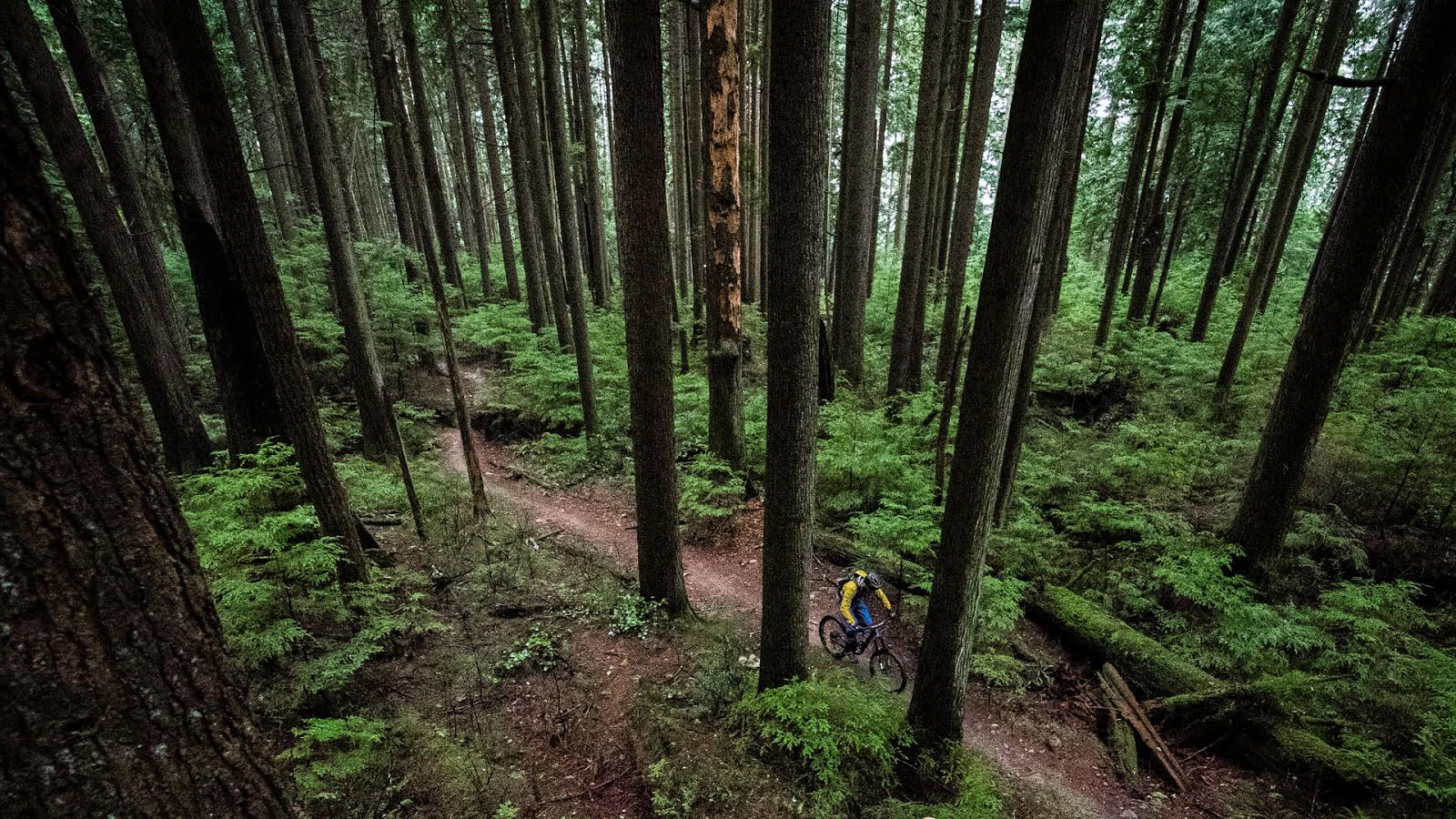
4 Bikes For Price of 2
2 for 1
This not an original idea. Riders have been doubling up on bike value by having an extra pair of wheels for decades. XC Race wheels with lightweight tires for fast rides and weekends. Trail wheels and more aggressive tires for training and riding.
More recently riders have also been stretching one-bike-does-most platforms, like Transition’s Patrol, by doubling up on wheels. Build up a set of light(ish) and wide trail rims with light(ish) reinforced grippy tires and ride it almost everywhere. Build up a set of aggressive DH rims with massive rubber and give the other set a break for big shuttle and bike park days.
Two different bikes for the price of one. Oh, and a set of wheels.

It isn’t a new idea for one-bike-does-most platforms. Keep the carbon trails wheels and lighter rubber for most days. Build up a set of wheels with beefier rims and mean meats for the bike park | Photo: Dave Smith
In the last couple of years an even bolder option has presented itself. Turn a single bike into two very different riding machines by owning both a 29’er wheelset and a 27+ wheelset.
Spend the big climbing days hammering on a set of 29″ hoops with suitable rubber. Race or ride. Hit the nastiest technical riding and greasy winter conditions on a set of 27″ x 2.8″ Maxxis Minions.

Chromag’s Primer is a great example of 2:1. Increased forgiveness and braking traction for nasty technical rides with 40mm internal rims and 3″ WTB rubber. Throw on some lighter, narrower, 29er hoops and preferred rubber to ride it or race it all day | Photo: Dave Smith
The Rabbit Hole
But wait. What if instead of one bike with two sets of wheels there were two bikes? Two bikes with similar drivetrains. One with 29er hoops and one sporting a 27+ setup. And it’s essential that both frames and forks use the same hub spacing.
Woah, woah. I thought this was about bringing back bike value? Two fresh bikes with interchangeable set-ups? What’s that going to cost?
Fair enough. But, most folks I know own two bikes. When riding is as much about mental as physical health it can be a necessity*. When considering the next ride, or the one after, a little planning will allow you to make major component decisions that overlap. Start by choosing the same hub spacing and match the number of clicks for the rear shifter and go from there.

I love the thought process behind Pivot’s Switchblade and I think Super Boost Plus is well considered. The 157mm rear end won’t be a solid choice for 4-for-2 until more companies get on board with the system | Photo: Fergs
Not all bikes are created equal when it comes to converting back and forth between 27+ and 29″. The big issue here is bottom bracket height, which is lower with a 27+ tire than a 29’er. A bike designed as a big wheeler that has a very low BB with 29″ x 2.3″ tire likely be unrideable with a 27+ x 3″ tire. A bike that has a high BB with 27+ tires will be much higher with 29″ rubber.
Kona’s Honzo line provides a good example. Even with a 140mm fork up front the 29″ Honzo has a low BB. 27+ tires will fit the newer frames but the BB height is too low for most technical riding. The Big Honzo, stock with 27+, still has a very reasonable BB height with 29’er hoops installed.
Many companies designing bikes for both 27+ and 29’er applications spec a longer fork for 27+ to compensate for BB height changes and some frames have adjustable geometry to accommodate both wheel sizes. It is something to keep in mind.
4 for 2
To reiterate, the only factors of compatibility are hub spacing and the number of shifter clicks. I suppose brakes could be an issue since rotor width and size does vary between brands, but most riders I know with more than one bike have a brake preference that is reflected through their stable.
It can be a mix of a high and lower end drivetrain and brand-swapping is a non-issue. For example, having one bike with 1×11, 11-42, Shimano drivetrain and another with a 1×11, 10-42, SRAM drivetrain makes no difference to wheel swap-ability. Put another way, Pete’s XTR 1×11 Chromag could play wheel swapsies with a SRAM GX equipped Specialized FSR Comp Carbon 29/27+ model and it would be all good.
Minor brake adjustment and GO.
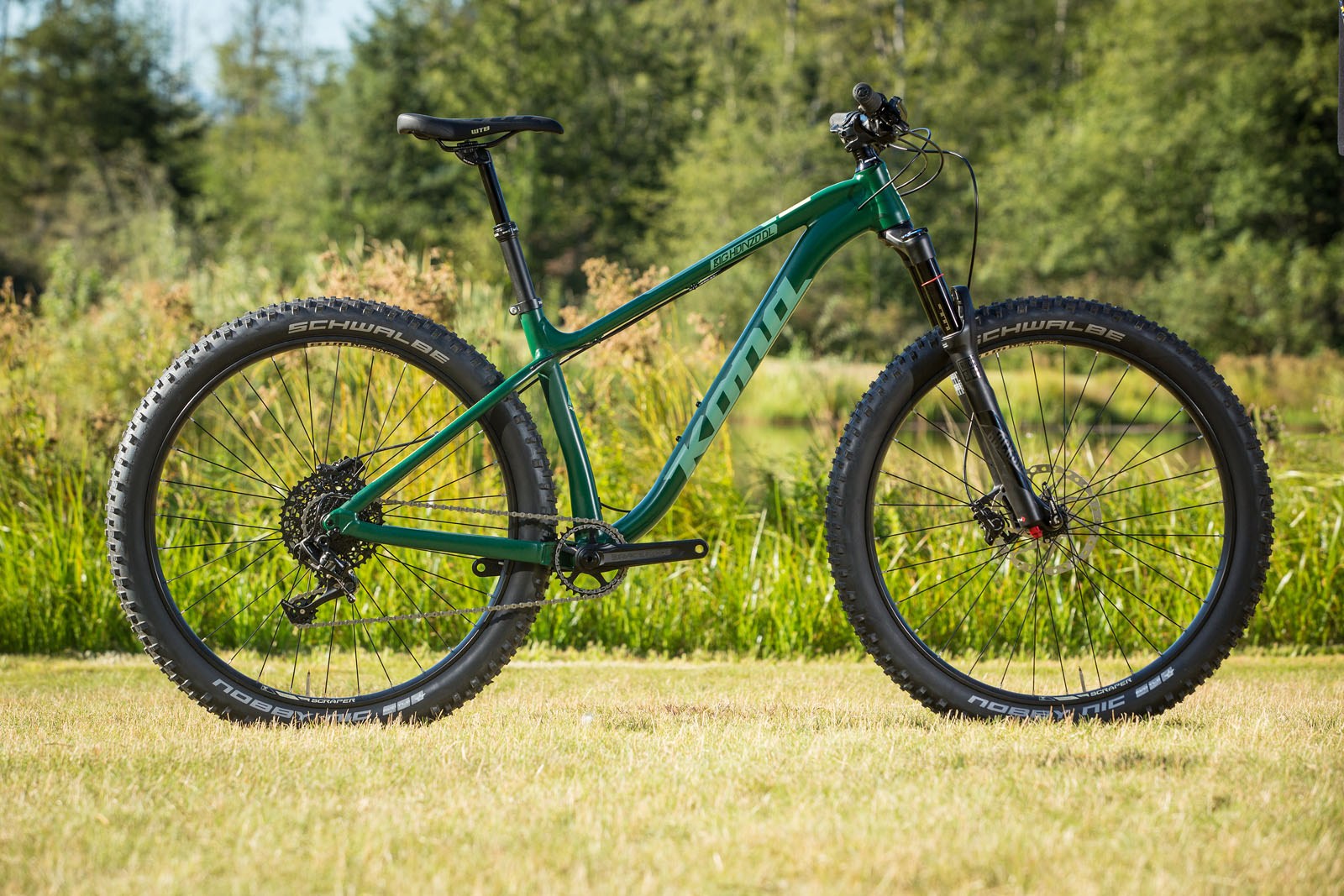
Kona’s Big Honzo is a great example of a 27+ hardtail that is happy with 29’er hoops. Boost 148/110 spacing. Fun fact: the Big Honzo is also future-proofed for a 35mm seat post. They did forget to thrown on some sliding drops for easy single speeding though! | Photo: Caleb Smith

Why not mix-and-match that Big Unit DL with a Niner RIP-9 and lightweight set up 29er wheels? Carbon or aluminum, there are many ways to balance a stable | Photo: Niner Bikes
Mountain Bike Value
There are a lot of ways to assess the value of a bike. Smiles per dollar for one. I know lots of people who paid an irrational premium to pick up a certain make or model that makes their heart flutter every time they look at it.
I’m not suggesting to sell everything and start fresh. But turnover happens. Just consider that a higher interchangeability of parts significantly decreases the possibility of unwanted downtime. If nothing else, having access to four platforms that ride very differently for the price of two sounds like a potentially exponential increase in bike nerd fun.
*One of those “First World’ necessities.
Will your next bike be compatible with 27+ and 29″?
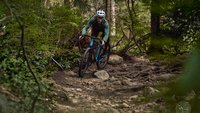

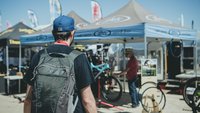


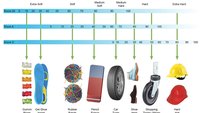
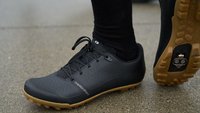
Comments
Wacek Keepshack
7 years, 2 months ago
Does that make me a hipster if I say that I've been doing 2 bikes in one Nomad back in 2008? I went further. I had Lyrik UTurn and I was lowering it to 120mm for long XC rides. Now I have a new Lyrik on a modern 160 bike which I ride at 160 locally, and I will set to 180 for a visit in the bike park. Unfortunately we can no longer change the travel by just adding spacers to the negative spring so it takes a bit more fiddling to swap shafts.
As to 27,5+ and 29 swapsbility. BB height is an issue if the rider prefers high cadences and cannot time pedal strokes.
Reply
DrewM
7 years, 2 months ago
Total hipster. No question. 3/3 appellate court judges say you have to wear your girlfriend's jeans with exactly two rolls at the bottom and ALWAYS inside your Blundstones so other hipsters can see they're authentic.
I'm curious what helmet you run that can accommodate your man-bun? Guess you're not too concerned about MIPS?
.
BB height is definitely the issue - even with some frames "designed" to run both sizes. Especially since the 27+ tires are smaller than 29'er to begin with AND sag more (lower air pressures).
The safe bet seems to be to buy a 27+ bike that can fit 29'er wheels vs. the opposite. The example I used was buying a Big Honzo and running 29'er wheels vs. riding a Honzo and running 27+. The standard Honzo with 27+ has a crazy low BB.
Reply
Wacek Keepshack
7 years, 2 months ago
That makes sense (the bit about BB height). I gladly accept your expertise with it (bit about my hipster) I run Bell Super 2R chin piece only, attached to my beard with string made of hemp fibers
As to having two non plus bikes in one I claim that wheel and tyre type play a major role in bike performance. A 160 bike with very light and fast rolling tyres will always outride one of these "modern" trail bikes where people install Minions or Highrollers anyways. Soon I will perform an experiment of running two Minions SS on my XC bike. It actually may be the bees knees. They weigh only 100g more per tyre when compared to a tyre like Rocket Ron but they offer plenty of cornering grip.
Reply
DrewM
7 years, 2 months ago
Safety second as they say. Time to upgrade to Super 3R?
I ran a pair of Specialized Slaughters with the same thought. They were awesome + anywhere XC rubber is awesome.
They were not awesome anywhere front braking down steeps was desirable.
Reply
ZigaK
7 years, 2 months ago
I'd be interested in a poor mans version of 1+1=n+1 (2017 edition).
Just to make clear what I mean by poor mans version, let me present my 200x -ish edition: road bike, that transforms to a commuter, gravel, cyclo cross, travel, racing bike and everything in between up to and including light xc without any modifications except cleaning and lubing it up for race days. And there's the other one, mtb hardtail, that covers everything from travel, xc, dh, am bike down to commuting, without any modifications except droping the seatpost and changing the tire pressure and attire.
The emphasis on cheap bikes (cheap to buy and maintain) and no modifications except for the ones that cost less than a spare tube 🙂
Reply
Morgan Taylor
7 years, 2 months ago
In that case you get a really rad drop bar bike with disc brakes, hydraulic if you like, whatever tires you want from 650b rando tires to 27.5 mountain bike tires to 700c road/touring tires and 29″ mountain bike tires. A truly front- of-the-wave bike that does way more than the bikes of only a few years ago.
And in the mountain bike you get something that covers the categories most people consider adventure / xc and certainly slower speed technical descending, but the reality is DH and AM/Enduro imply a different speed/pace of riding technical terrain and most would not consider a hardtail appropriate for that kind of riding.
Personally I'm really into both of these categories of bikes right now, but where the drop bar bike is forward-thinking, the hardtail / rigid mountain bike is a legacy / enthusiast / slower speed fun bike with modern brakes and drivetrain.
Reply
DJ
7 years, 2 months ago
publish the review of that Patrol already guys!
Reply
Pete Roggeman
7 years, 2 months ago
It's coming, it's coming…
Reply
peterk
7 years, 2 months ago
Interesting concept and I've done it on a couple of bikes, but trying to stay on top of the standards really ruins finding hubs on sale and resale value. Thought about doing this to a fatbike, (26×4 and 29×3) but decided to build up a used 29er instead.
Reply
Tehllama42
7 years, 2 months ago
I think the most compelling of these is the Hardtail and mid-travel combination. Take a do-everything FS bike and put beefy wheels and tires on it, and the all-mountain side of the spectrum is covered. Get a little spendy on some nice light wheels and fast rolling tires and keeping up with XC buddies on climbs will only be limited by your own legs/lungs.
The default combination is of course beefy wheels on the more capable dual suspension bike, but the inverted option is increasingly appealing to me, as I find that spritely wheels and less abusable tires are actually a better recipe for maximizing enjoyment on short rides or after-work excursions where in less likely to be on my A-game through rock gardens our at the traction limit anyway.
The Hardtail with beefy tires is still the ultimate winter bike, and a hard hitting hardtail is already the best/worst kept secret in mountain biking for turning miserable weather into indelible grins.
Reply
DrewM
7 years, 2 months ago
This. Money aside (hahahahaha) I like the idea of a slightly over-forked racey 29er build on a carbon Niner Jet combined with Pete's Chromag (or a Ti Honzo once it goes Boost) built with a mean set of 27×3. Yum.
Reply
John
7 years, 2 months ago
So, tell me if I'm doing this right then… Honzo Ti with a 140 fork, Evil Following, and an Intense T275c… Run wide carbon 27.5s with 2.5 DHFs on the Intense, but swap those onto the Honzo with 2.8 Rekons for winter (and special occasions), and swap racy and burly wheel sets back and forth between the Evil and Honzo? 1×11 throughout, and no boost to be seen anywhere!
Reply
DrewM
7 years, 2 months ago
Wow; that's a sweet fleet!
Which 140mm fork do you run on the Ti Honzo?
Reply
John
7 years, 2 months ago
Yeah, I may have a bit of a problem…
Honzo is running an MRP Stage.
Reply
Tehllama42
7 years, 2 months ago
I mean, you're definitely doing something right. I also agree that 148mm spacing is not a prerequisite to running 2.6-2.8 tires, so I think your example brilliantly illustrates whee the titanium Honzo is conceptually better than how the carbon one turned out being executed (boost, but less tire clearance)
Reply
Vik Banerjee
7 years, 2 months ago
I am building up a new bike and went out of my way to grab a frame that uses the same wheel size/hub standards/drivetrain for cross compatibility. I don't really need/want to swap wheels/tires on a regular basis as I find the same tires are good for at least the whole season [~6 months] if not the whole year. But it's nice knowing that you can keep your bikes running even if something critical needs repair.
My oldest bike is in year #9 so I'm also thinking about many years from now I can cannibalise one bike to keep the other running regardless of what wacky standards are the flavour of the season.
Reply
Geof Harries
7 years, 2 months ago
What new frame did you buy?
Reply
Vik Banerjee
7 years, 2 months ago
Knolly Endorphin. I've wanted to try a Knolly for a while. The sale and the fact it was not Boost made it too hard to resist.
Reply
DrewM
7 years, 2 months ago
There's an opportunity to do a 1+1=4 build using an Endorphin and a decent clearance 27 hardtail.
27x for faster trails; 26+ for really big volume.
.
Actually, the Endorphin has pretty massive tire clearance. It may fit a 27×2.8? Then it's just finding a hardtail with similar clearance using 142.
Reply
Vik Banerjee
7 years, 2 months ago
The Endo will fit a real 2.6″ tire so that includes a Maxxis 2.8″ tire. It won't fit a real 2.8″ tire like a Schwalbe 2.8″ plus tire. The generous clearance is one of the reasons I went with the Endo. I want to run a 2.5″ possibly a 2.6″ tire. I don't have any need for a plus tire in that bike.
I've had a Surly Krampus 29+ since they came out a few years ago. That meets my needs for a bikepacking bike. I don't want a hardtail beyond that use. I don't see any significant downsides to just running a modern FS bike for all my trail riding and every time I have tried a hardtail on our local trails I came home wishing I had been on FS.
I also don't need multiple wheels/tires for my trail riding. I can be happy with one set of tires for 12 months/yr use. I might get motivated to put something different on for summer vs. winter, but 1 tire swap a year doesn't require two wheel sets.
Where I do see some value in having cross compatibility is dealing with down time due to maintenance. Especially when it's unplanned. Being able to swap wheels or a fork and get back to riding right away is great.
Reply
DrewM
7 years, 2 months ago
I was simply looking at the Endorphin in the context of the article. Not your Endorphin in particular. Your opinion on hardtails is very clear.
Thanks for the info re. Tire Clearance.
Reply
Tehllama42
7 years, 2 months ago
If you add a tire swap a year as an option, then I think more possibilities open up, especially in the 27+/29 end where one is a hardtail. In warmer months, the 29er wheelset wears fast rolling tires (Minions/Forkeaster/ArdentRace), but in winter they roll mud tires. The 27+ setup likely stays put.
Living in a high altitude desert, that tire swap becomes unnecessary, but somewhere with real precipitation having access to mud spikes would be a clear benefit, as that's the wintertime trail condition that plus tires won't excel at.
To me, plus tires have mostly just shown me that I won't ever mind running 900g 2.4″ tires with wide rims, and that it's miles more fun that nursing 2.2″ tires across the same trails for marginal gains in rolling resistance. I think that's the biggest thing holding plus setups back, is that there are so many really great 2.5″ tire options, which offer most of the benefits and require few if any drastic changes.
Reply
Vik Banerjee
7 years, 2 months ago
I live in the Coastal BC and don't find you need to change tires summer to winter. At least not for trail riding. There are good tires that roll well and grip well through a variety of conditions. I've currently got a set of semi- slicks in the garage I need to wear out. I'm still trying to figure out whether they are worth the hassle of swapping tires or not vs. my go to year round rubber.
I agree that a 2.4″ - 2.5″ tire on wider rims is an amazing combo. Despite having been an early adopter of fat bikes for snow/sand and 29+ for bikepacking I have not enjoyed plus rubber for trail riding nor really seen a compelling reason to go that wide for our local trails.
It will be interesting to see what options come out in 2.5″ - 2.6″ widths in the next year or so as the Plus-Minus product ranges fill out. Yes the new thing is Plus-Minus. You heard it here first folks. 😉
Reply
Tehllama42
7 years, 2 months ago
Agreed, the Husky tires are going to be the ticket for most uses - solid 2.5-2.6″ (actual width on rims) tires are going to be what works. For less aggressive riders who contend with less sharp rock/cacti those can be 875g tires with gobs of traction and usable knobs, and the reinforced casing version in 1kg packaging will just plan rock for all mountain use.
I'm spoiled enough I can run semislicks even in our brief bits of snow cover with remarkably minimal downside (although MinionSS's dragging side knobs everywhere seems to be part of that magical equation), and DHR2's are otherwise ideal tires for where I'm at… I too balk at wanting to swap tires, especially since I'm always tinkering around with enough stuff that I don't want to have to re-learn traction limits at lean angles any more than necessary.
Reply
Metacomet
7 years, 2 months ago
I built myself a bit of a 1+1=4 setup as well last year. V3 Nomad and Surly Instigator. 27.5/26+ either which way. 26″ rims are Derby's I got on closeout, and 27.5 rims are WTB i29's.
It's been fun, but the available 26+ tires have been a severe limiting factor, so didn't really get too much time to give 26+ a proper shakedown on the Nomad. The dirt wizards were too delicate and had a sort of plastic'y feeling to the rubber on roots and anytime it was wet. It proved that there was some promise to the combination in the right conditions though. Then tried Vee traxs fatty's on the instigator and they were even worse regarding durability, but did roll noticeably faster. Never bothered or dared to try them on the Nomad as the clearance was too tight, and the tires were way too delicate for that bike. Have 2.8 WTB rangers on the Instigator now but have yet to put a ride on them due to all the snow we have at the moment. The tough casing seems promising. Looking forward to giving this tire a shot in the spring, but am anxiously waiting for the 26×2.8 minions to come out, as I think that will be the ticket for both bikes.
Reply
DrewM
7 years, 2 months ago
I have a +/- (ha) 27×2.6 Specialized Slaughter on the way. I love the combo of fast rolling and cornering grip the Slaughter/RockRazor provide but always wish for more volume (especially on the hardtail).
I agree the new breed of true 2.6″ rubber (27 & 29) with good sidewalls is going to the thing.
Reply
DrewM
7 years, 2 months ago
I keep hearing about 26+ stuff coming but rubber is definitely what's missing.
Reply
Please log in to leave a comment.